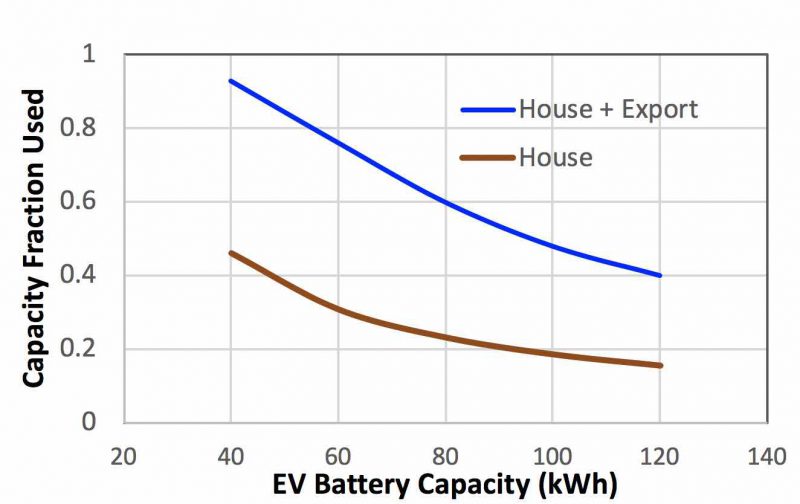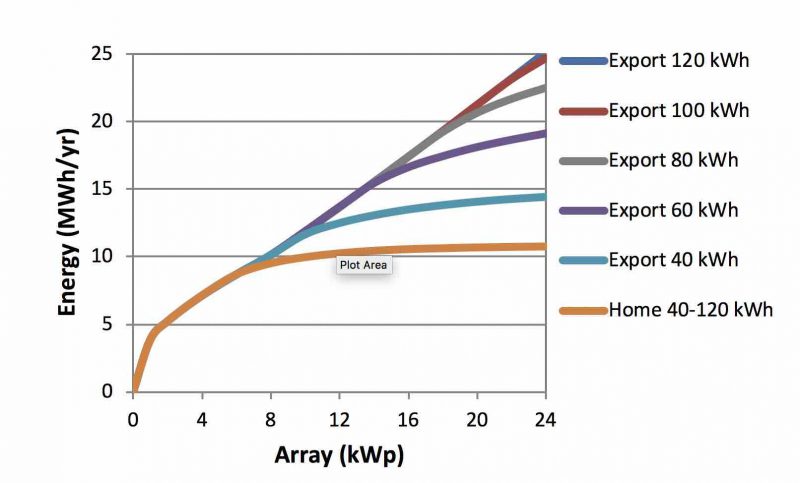Many discussions abound on how Australia can reach renewable energy targets of 50 per cent and much more. Many experts believe achieving this goal will depend on the availability of a low cost, bulk energy storage infrastructure.
Pumped hydro has received much attention in this regard. While technically feasible, bulk storage still requires transmission and distribution infrastructure that is not only costly but will take considerable time to implement.
A far simpler and cost effective route is the bottom-up approach of turning each house into an autonomous energy unit.
The use of solar panels in homes and small industry has proven to be remarkably successful. The uptake of rooftop solar has been so good that the grid, as well as losing a portion of their market to solar, is becoming unable to use all of the exportable household solar energy generated during clear days.
Without some form of energy storage, solar panels can provide only around 30% of daily household energy, leaving the grid to supply the rest. Solar hot water systems can bring the total solar contribution to around 45% of energy requirements.
However, to reach greater household energy autonomy requires storage.
The missing element to achieving high levels of renewable energy has emerged in the form of the Electric Vehicle (EV). EVs not only provide transportation, but also have significant battery storage capacity.
For most drivers the full driving range provided by the battery capacity is only used for holidays. It has been estimated that the average car spends up to 95% of its day parked and available for both charging and discharging. With a sufficiently large PV array the battery capacity in most EV’s is sufficient to attain near 100% solar supply in homes.
Using EVs as mobile storage units linking to the house with V2H (vehicle to house) technologies is currently under intense investigation. Of great importance is the significant storage capacity of EVs in relation to national electricity generation.
In Australia, average daily electricity generation is about 700 GWh/day while the number of cars is ≈ 20 million.
If all of these cars are replaced by EVs, the storage capacity per EV required to store the daily average electricity generation would be ≈ 35 kWh/day, well less than half of the storage capacity of a Tesla S.
The battery capacity of an EV is highly under utilized when used for storing household energy.
For example, if a Tesla S (100 kWh/day battery storage) is connected to a 20 kWp solar V2H system consuming 30 kWh/day energy the daily storage capacity utilized is only about 20% of the total capacity available (Fig 1).

Our calculations (Fig 2) also show that there is significant excess energy available for export in solar-V2H systems. For example, the above solar V2H system, in addition to supplying ~100% of household and EV load requirements, also generates a further 100% of the load as excess energy while utilizing only 50% of the available battery capacity.
This excess energy can be exported to the grid similar to the situation for household systems with no batteries.
A major difference, however, is that the export energy from a solar V2H system is available on demand over 24 hours, not just when the sun is up, allowing the grid to level out periods of peak generation during the day.

To achieve significant export energy supply requires larger PV arrays than can fit on many houses.
For example, to deliver export energy equal to the yearly household load requires an array of around 120 m2. However, any shortage in array can be overcome by using a local solar farm to supply any additional PV energy needed.
Since the generation profile of the solar farm matches the shortage profile of the house array there are great synergies involved. The solar farm acts as a defacto array for the solar-E2V, supplying the additional energy needed boost its export.
Alternatively the solar-V2H system can be considered to be a storage unit for the solar farm, enabling it to supply energy 24 hours a day. Many options also exist for working together with grids.
Given that Australian households consume ~ 25% of the country’s electricity, achieving household energy autonomy via solar V2H systems should be a Government priority. By having a near-autonomous household energy supply there would be no need for the type of grid as it exists today.
Virtually all energy required would be generated behind the meter by solar panels on the roof. Transmission and distribution costs should largely be vastly reduced through the use of local micro grids.
The concept of the near-autonomous energy house with or without grid interaction is clear, sound and attainable. The energy is renewable and sustainable.
Systems have been developed and the technology is commercially available. With appropriate incentives in place relatively rapid implementation is possible.
Paul McCormick is Professor in Mechanical Engineering at University of Western Australia.

